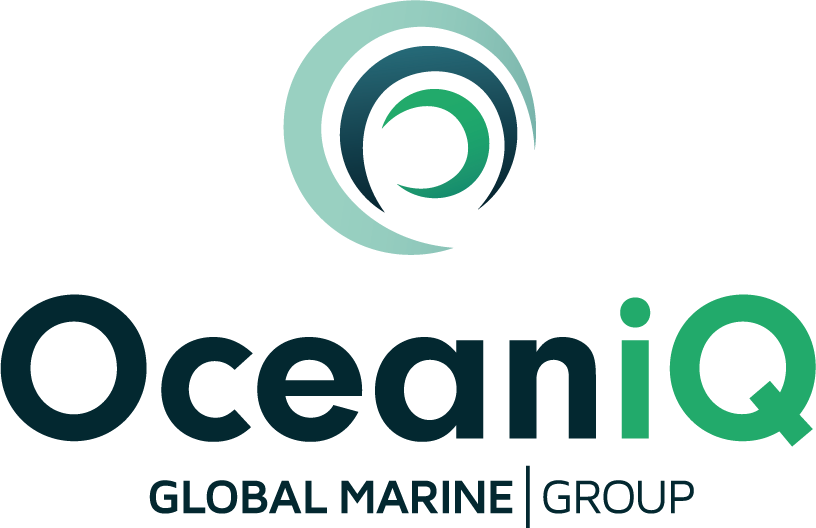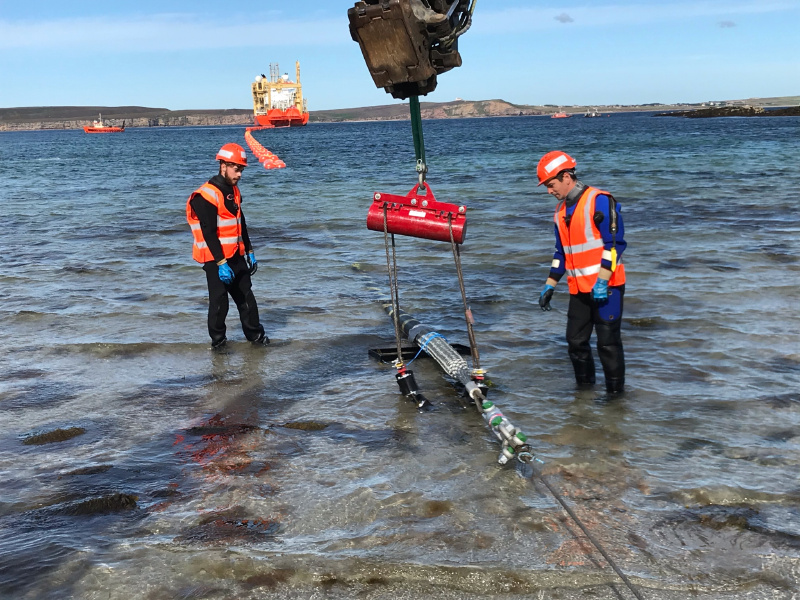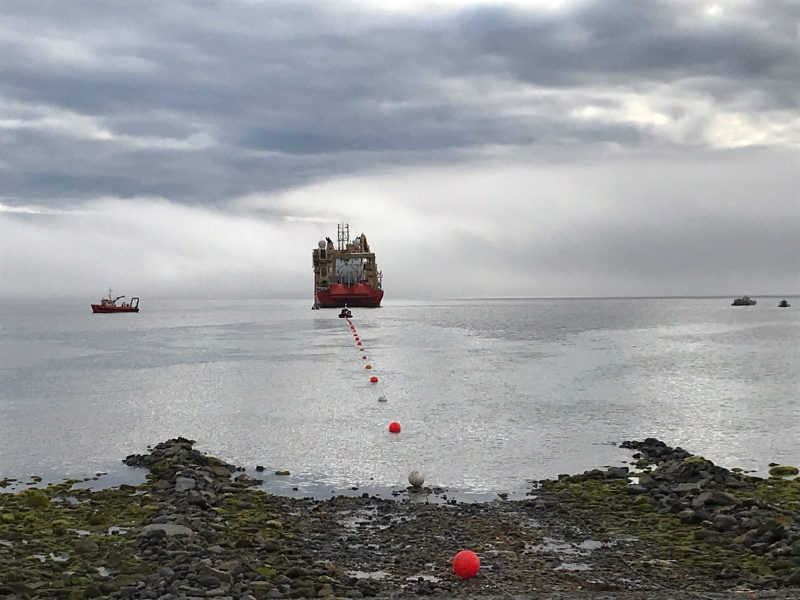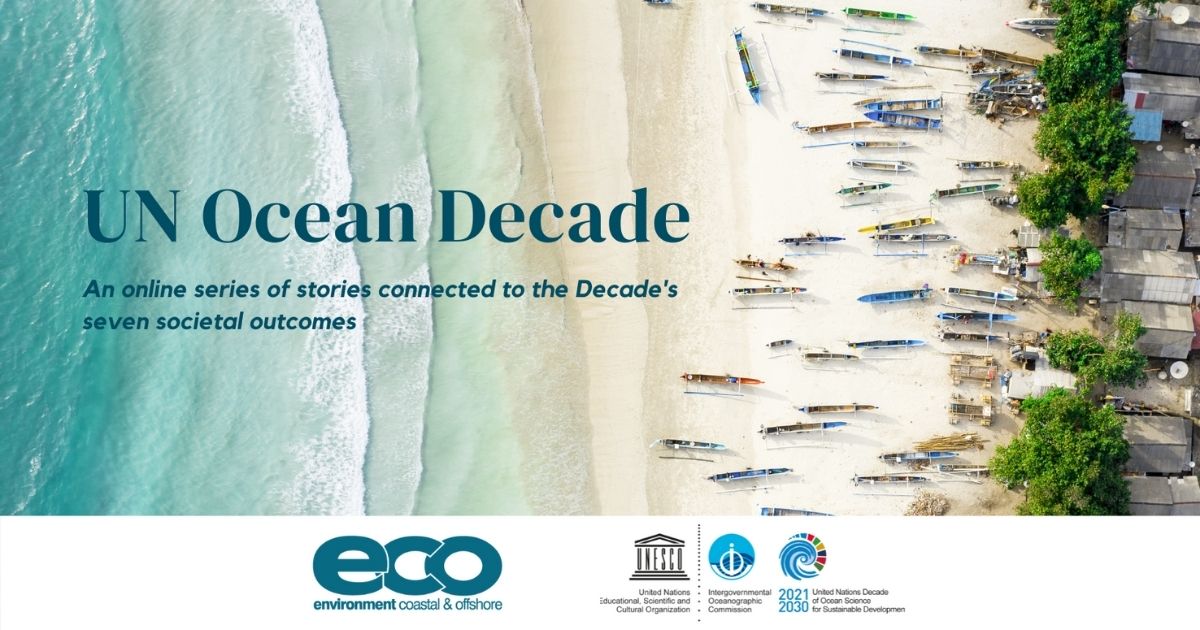By Brian Perratt, Permitting and GIS Manager at OceanIQ
 As of early 2021, there were over 4.5 billion active internet users worldwide. Technology continues to develop at a fast pace with so much of our world hinging on constant connectivity and global access increasing to more and more communities and demographics. This connectivity that we rely so heavily on, as well as the energy that supports all aspects of our daily lives, is underpinned by a critical and complex subsea cable infrastructure.
As of early 2021, there were over 4.5 billion active internet users worldwide. Technology continues to develop at a fast pace with so much of our world hinging on constant connectivity and global access increasing to more and more communities and demographics. This connectivity that we rely so heavily on, as well as the energy that supports all aspects of our daily lives, is underpinned by a critical and complex subsea cable infrastructure.
With more than 97% of international communications being transmitted through fibre optic cables undersea, seabeds continue to become more congested every day which, without careful management and planning, could create a lot of risks to new and existing subsea cabling projects, as well as marine life. It's now more important than ever to have access to, understand and utilise valuable subsea data to support these vitally important underwater cable operations.
In-accurate data can damage the infrastructure
Working under the ocean in inherently risky, there are natural obstacles and phenomenon to navigate and threats from inadvertent human intervention to manage. With the growth in subsea cable numbers, in many congested seabed areas we can add to that the risk of working alongside existing assets on the seafloor. However, with a clear understanding of the environment these risks can be properly understood, evaluated and mitigated.
Throughout the planning, installation and operation of a submarine cable, project data is created and collected. This data – including fibre maps, burial depths, armour types and much more - remains in a state of flux and is continually captured. If this data is not accurately charted, managed and interpreted, costly mistakes can arise.
Vessels can be loaded with incorrect cable types for a repair, unexpected cable crossings could only be realised during the installation operation, grapnels can cut through or damage uncharted cables, recovery of the wrong cable could occur, damage may be caused to uncharted repair bights or even cause harm to pipelines. Accurate cable records that are accessible to as many ocean-goers as possible, can help avoid planning pitfalls, preventable costs and mistakes, and ensuring the long-term safety of a new cable system by fully understanding risks, the subsea and landing site environments, licencing requirements and likely challenges all before the project begins.
It is the responsibility of the cable owner to maintain records for their cable system, however often these records are not properly checked and updated by the wider industry, which can lead to errors creeping into the data, creating unnecessary risk for future operations and for the world’s infrastructure.
 Ownership of Global Marine Group
Ownership of Global Marine Group
A fibre optic seafloor
There are currently already 2,600,000km of subsea telecoms cable in commission. In total, the subsea fibre optic cables span hundreds of thousands of miles, across almost all the world’s largest oceans. To put into perspective how fast these fibre optic cables process data, the Marea cable for example, which reaches from northern Spain to the eastern United States, transmits 160 terabits of data per second. This scale, and seemingly insatiable hunger for data at the click of a button, demonstrates quite clearly how powerful these cables are and how vital they have become to global communication around the clock. It is vital that they are well maintained and quickly repaired should a fault occur, which is a common and growing figure as our data shows that there were an average of 190 annual fibre optic cable faults in the last five years. The cost in downtime for these cables has amounted to £227 million, and on average we expect to require one repair for every 413km of array cable installed. This alarming statistic proves how important it is to prepare thoroughly when installing new subsea cables.
Almost 66% of the world’s population is expected to have access to the internet by 2023 with three-times as many internet-enabled devices in operation than the human population. Demands for increased bandwidth to accommodate this growth trend will require investment in new high-capacity submarine cables with a focus on ‘a safe ocean’ and how to safely install and provide ongoing maintenance for them.
However, alongside active seabed cables there are also retired (inactive) cables. Both active and inactive cables need to be considered when conducting repairs or installing new cables. Most fibre optic cables are engineered with a design life of around 25 years. Cables may remain operational for longer than this, however as technology improves and new cable capacity increases this may become economically unviable leaving more just sitting on the seabed as obstacles to future developments.
Powering our world
Power cables are also dominating global seabeds. Like we rely on fibre optic cables, we also do the same for power. The energy that heats our homes, keeps the lights on and powers the modems that keep the internet flowing into our lives is transported from its original sources and between countries through a series of cables that connect offshore power generators – such as oil and gas rigs and, more recently, renewable sources such as wind farms – to the National Grid. Many countries are dependent on these cables being properly maintained, especially in times of crisis such as COVID-19 where power supply and internet access has been used more often in many homes around the world.
There is an estimated 20,000km of new power cables to be installed in Northern European waters alone by 2030. These trans-national interconnectors allow countries to trade and transfer power, ensuring a steady supply, managing fluctuations, and stabilising prices for consumers.
An understanding of previous faults and access to accurate and up-to-date data on cable success rates, makes a huge difference to route planning and engineering to ensure long-term integrity of a system and helps avoid interventions as much as possible. Data from Lloyd Warwick and Codan suggests that 82.3% of insurance claims in offshore wind are as a result of cable faults or damage.
 Ownership of Global Marine Group
Ownership of Global Marine Group
Conclusion
When preparing new cable routes, underwater cabling projects and marine operations, accurate data is paramount. Fully understanding the seabed to mitigate against any potential risks from neighbouring cables will not only support your project but will benefit future operations in developing power and internet communication, whilst striving for a cleaner and safer ocean.
Leaders in subsea engineering
OceanIQ delivers industry-leading subsea cable data, route engineering, permitting and consultancy services for telecom and power cable route planning projects, plus ongoing support to maximise the life and efficiency of live systems across the globe. We have decades of first-hand knowledge and experience in installation and maintenance of both fibre optic and power cable, that means we can understand and accurately prepare for your underwater cable projects. Our SEA Data Platform specifically offers bespoke packages to store, manage and enhance your data with valuable engineering consultation, safeguarding it long into the future.
Links for reference:
This article is the last story in an online series dedicated to the UN Ocean Decade. Stories were published each week related to initiatives, new knowledge, partnerships, or innovative solutions that are relevant to the following seven Ocean Decade outcomes. Access the special digital issue dedicated to the Ocean Decade here.





